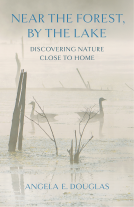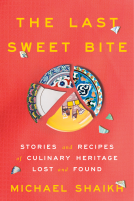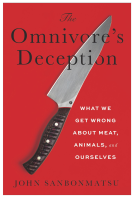
The Atlas of Disease
Mapping deadly epidemics and contagion from the plague to the zika virus
by Sandra Hempel
This title was previously available on NetGalley and is now archived.
Send NetGalley books directly to your Kindle or Kindle app
1
To read on a Kindle or Kindle app, please add kindle@netgalley.com as an approved email address to receive files in your Amazon account. Click here for step-by-step instructions.
2
Also find your Kindle email address within your Amazon account, and enter it here.
Pub Date Nov 27 2018 | Archive Date Nov 05 2018
Quarto Publishing Group - White Lion Publishing | White Lion Publishing
Talking about this book? Use #TheAtlasOfDisease #NetGalley. More hashtag tips!
Description
But what is vital in all of this is how the disease spreads and develops. In The Atlas of Disease, Sandra Hemple reveals how maps have uncovered insightful information about the history of disease, from the seventeenth century plague maps that revealed the radical idea that diseases might be carried and spread by humans, to cholera maps in the 1800s showing the disease was carried by water, right up to the AIDs epidemic in the 1980s and the recent Ebola outbreak.
Crucially, The Atlas of Disease will also explore how cartographic techniques have been used to combat epidemics by revealing previously hidden patterns. These discoveries have changed the course of history, affected human evolution, stimulated advances in medicine and shaped the course of countless lives.
Marketing Plan
Key Selling Points:
This is a popular area for publishing and this book takes a unique approach by looking at the spread of disease from a cartographic point of view.
This is a fascinating look at the topic, perfect for readers who loved The Sick Rose and Crucial Inventions.
Includes the reproduction of key historical maps as well as specially commissioned maps that help to illuminate the subject.
Key Campaign Activity
Publicity - Long lead print as well as cartography/history
Social media outreach through the Quarto especially Instagram and Facebook
Publicity/Media:
Primary cartography/history outlets including Point of Beginning Online, American Surveyor Online, SideShots, ALS News, History Online, Smithsonian Online, Prologue Online, HistoryNet.com
Secondary pop culture including Huffpost, Buzzfeed, Washington Post, The New York Times, Wall Street Journal, Stuff You Should Know, NPR
Trade Review: Library Journal, Publisher's Weekly, Booklist, Bookish, Shelf Awareness, Kirkus, BookTrib
Available Editions
| EDITION | Other Format |
| ISBN | 9781781317907 |
| PRICE | $30.00 (USD) |
| PAGES | 224 |
Featured Reviews
Fascinating look at epidemics, outbreaks and other ways microbes can harm you
I loved this book. Even though the book is grim (20 different ways that germs can kill you), it was still fun to read. Sandra Hempel provides an overview of these infectious diseases: their causative agents, how and where they originated and how they spread. The information is provided concisely, but is accompanied by maps, images of the microbes, and works of art portraying the diseases. While there was some science, it was explained very well. I recommend this book for anyone interested in biology, medicine or the history of science.
 Lili F, Reviewer
Lili F, Reviewer
A combination of Epidemiology and maps, yes please! While I was reading this I was reminded of one of my favorite video games, Plague Inc, the maps of infection spread calling to mind the same game mechanics, never have I seen a book quite like this in my various studies of infectious disease and I love it. It is not just the path of infection, but also countries affected the most in various years, showing really fascinating trends of population density and poverty to infection rate. The book is also full of a lot of historical and medical details that will seem a little redundant to anyone who studies Epidemiology, but would be a wealth of information to someone with only a passing knowledge. My only complaint is the map for Zika Virus, while read on the computer it is really hard to see with the wavy background they gave to the ocean, though I was really glad to see the inclusion of Zika.
 Grace W, Educator
Grace W, Educator
An intereting read. I am always fascinated by how things like pandemics travel across the world. Only recently we had the disease in parts of the world which have had to be contained. I have always been addicted to the app game pandemic when where you have to make a disease spread across the world to win. This book is like a real life insight into that. It didn't disappoint.
 Brooke W, Reviewer
Brooke W, Reviewer
This interesting book provides a brief overview of the symptoms and history of major contagious diseases alongside maps visualizing epidemics.
 Annette J, Reviewer
Annette J, Reviewer
A beautifully illustrated , clear and concise book about epidemiology and the history of disease migration, this was a very educational and informative read. It is written in a simple manner, making it easy to understand and the breakdown of each disease at the beginning of the chapters e.g.causes and carriers, symptoms, prevalence etc was very helpful. The real selling point of the book are the wonderful maps that show the movement and progression of the various diseases over time, ranging from historical outbreaks of illnesses like the plague, smallpox and cholera to the AIDs epidemic of the 1970's and 1980s , and right up to the current day with Zika. I also liked the fact that there is a strong focus on what the future entails for these diseases.
 cindy l, Reviewer
cindy l, Reviewer
Pretty book about an important, but scary topic. Spread and dynamic are dependent on factors many can't even begin to anticipate. Fascinating topic and critical to know. I liked reading this and learned a lot- wish there could be more to be done to intervene as disease travels.
 Jan T, Reviewer
Jan T, Reviewer
nonfiction, medical, science, spread-of-disease, maps
I already know the basics of signs/symptoms and transmission of highly contagious diseases courtesy of an eclectic nursing career, but generally have difficulty envisioning global pathways (think of it as map dyslexia). This book revisits the more notable contagious diseases throughout world history, but is exceptional in that it gives excellent visuals demonstrating WHERE the diseases traveled and if simultaneously or sequentially. Fascinating! An excellent resource for geeks and practical application as well. I will be glad to revisit this book periodically, and not just for crosswords or to win a bet with a colleague!
I requested and received a free ebook copy from Quarto Publishing Group - White Lion Publishing via NetGalley. Thank you!
 Librarian 490739
Librarian 490739
Probably shouldn't have started reading this during lunch, haha.
The book is divided into different types of transmission and goes in depth on where the disease originated, the symptoms, plagues that were caused by it, and how it was eradicated. There are some really cool maps illustrating how some like the 1918 flu traveled around the world. Just in case you think that the diseases aren't all that bad, there are a number of gross illustrations of things like smallpox.
Not a bad book to get for that budding epidemiologist in your family or if you are into slightly gross/disturbing health history.
I received this book for free in exchange for an honest review from Net Galley.
Thank you to NetGalley, White Lion Publishing, and Sandra Hempel for an ARC ebook copy to review. As always, an honest review from me.
The Atlas of Disease is perfectly summarized in the title. The book features diseases that have caused epidemics, outbreaks and overall ill health in humans throughout history. The author uses maps to help illustrate the spread of, infection rate, and other useful information relating to each disease.
Each disease featured starts with the basics about it, so even if you’re not an expert in the field you can learn about the disease enough to have a good understanding to read the rest of the section. The next few pages describe the history, transmission, and much other information related to that specific disease. I found it fascinating and learned some new information, even beyond what I had learned in my college courses.
I found it very interesting to see how people’s actions affect the spread of disease including individual people’s choices, the political climate, war, poverty, and famine. Also the book is a great example of why vaccinations are so important. Yes, anti vaxxers I’m talking to you. Vaccinate your children!
However, some of the maps didn’t interest me that much. Partly because I was reading it on my iPhone so I had to constantly zoom in and move the page of the book around the see the whole map, so it was more bothersome than worth it. Also I already understood most of the information through reading the text, so the map didn’t give me too much additional information. But if you’re a big visual learner or very next to the subjects then the maps would be very helpful.
All in all, I really enjoyed reading The Atlas of Disease. I highly recommend it, especially if you’re a nerd like me.
This is a book that will only appeal to a certain group of readers, but since I am in that group, I found it fascinating. Sandra Hempel offers a concise history of various diseases that have plagued the Earth for centuries (and in some cases, millennia), and writes in a very clear manner. It's not bogged down with too much academic terminology, making it accessible for the general public, not just those studying the topic.
The structure of the book itself is amazing, and the maps are so informative. Hempel includes old drawings/political cartoons of the diseases, which helps show the historical impact of the disease. She also doesn't focus too much on one disease; each chapter is relatively short, yet still provides a great deal of information. It takes a great deal of talent to be able to have something be in depth and short at the same time.
Bottom line: if you like to study history and disease, this book is for you.
The Atlas of Disease: (oct 2018)Mapping deadly epidemics and contagion from plague to the zika virus
By Sandra Hempel
October 2018
Nonfiction, health
I received a digital ARC copy of this book for review from NetGalley and Quarto Publishing in exchange for an unbiased review.
This is an interesting review of the history and spread of contagious disease. It is well organized and provides basic information which is easy to read. The history and location of origin is fascinating and beneficial information. There are helpful maps to help visualize the information.
 John L, Reviewer
John L, Reviewer
This is a very good popular science book, conveying as it does the history of science where several major diseases are concerned. It's not perfect (it constantly calls leprosy leprosy, even once it's said twice it's now called something else, and the purples on many maps really were impossible to differentiate on my e-arc) but it's very good. If you want to hope, like the WHO, that many of these diseases can and will be eradicated by 2020 then you'd better hope skates are fully got on, as some of these really are prevalent. A quarter of a million new diagnoses of leprosy (sorry, it's called something else now, apparently) in 2017 alone? Nut-jobs saying injections against measles cause autism? No, things really do have to look up, but this book is also great at looking back – where the diseases may have came from, how we thought they travelled way back when (and how we know they do travel now), and so on. The post-WWI incidence of flu was only named Spanish Flu because the neutral country felt able to publicise it in the press; other countries were combatant states where any such negative reporting would be bad propaganda. It's details like this you turn to books like this for, and that approach really seems to work for the illnesses herein. Most impressive.
 Becky B, Librarian
Becky B, Librarian
A look at epidemic and pandemic diseases that have afflicted the world with a focus on maps of the spread of these diseases and how mapping diseases has been influential in aiding epidemiologists. Each disease gets 6-8 pages of text describing where it likely originated, when it was first noted, how it manifests and is treated, how it spreads, the years of major epidemics/pandemics (with maps of these), and how/when the WHO aims to eliminate the disease.
I find epidemiology a fascinating field. It’s a medical field that often gets overlooked until a major pandemic threatens and suddenly people who’ve never heard of an epidemiologist are paying major attention to their work. Even during such pandemics, you may never hear the term epidemiology mentioned but they are the oft unsung heroes who make it their job to find ways to stop those pandemics. The ways that maps can shed light on how diseases spread is integral to epidemiology, and an interesting overlap of geography, statistics, and science. This book keeps all the chapters short and easily readable. They are set up so that you can read individual chapters without needing to read any other, especially in that information relevant to different diseases is fully explained again when it appears in another disease. For people reading the book straight through, this may be annoying in its repetitiveness, but it does increase the usefulness of the book as it makes the book good for both quick researchers of specific diseases and full readers. Recommended to those who want to find out more about epidemiology, map lovers, and those fascinated by medical catastrophes and/or breakthroughs.
Notes on content: No language issues. The fact that some diseases are spread sexually is mentioned very textbook clinically. There are detailed descriptions of how various diseases can afflict sufferers and kill. Some of those are a bit nasty, and obviously there are millions of deaths mentioned over the course of the book.
I received an ARC of this title from the publisher through NetGalley in exchange for an honest review.
 J. Aislynn d, Reviewer
J. Aislynn d, Reviewer
Hempel's Atlas of Disease looks at our history with contagion, focusing on some of the worst illnesses humanity has faced thus far. There are four sections, divided by transmission type- airborne, waterborne, insects/animals, and human to human. At once terrifying and fascinating, this book will introduce the reader to some of the deadliest diseases, from typhoid, to bubonic plague, to ebola. Maps accompany, charting pandemics and epidemics the likes of which have shaped our history. We see how diseases and treatments have varied through history, and changed over time, as more evidence comes to light. Great for those interested in epidemiology, and disease through history.
***Many thanks to Netgalley and Quarto Publishing for providing an ARC in exchange for a fair and honest review.
How very cheerful. If you know anyone who is a perpetual moaner or who loves gloomy books, maybe you could gift them a copy. Airborne diseases followed by water borne, then those transmitted by animals or insects and humans, make up the contents. A few pages on each illness - influenza, cholera, polio, HIV - are followed by a colour-coded map of the world showing where or when each illness occurred. Then there is often another map for the most recent outbreak, or the state of play in 2016. Efforts to combat each disease are discussed, from quarantining to vaccination. Of course we see the famous map of cholera spread in London. From this we expand to see the progress of diseases around the world, with medieval or modern travel. Don't forget the illustrations of the day of what a patient looked like.
To be clear, we don't get rabies and the common cold; just pandemics and killer epidemics. The Spanish Influenza, plague, leprosy, typhoid. Zika, Ebola. I'm getting the shivers just reading about them. Those starting to study medicine, or with an interest in geopolitical history, will find this book fascinating. Personally I'm glad I live in this century, and not in a country which still has polio or TB. This is a well produced book with useful information.
I downloaded an e-ARC from Net Galley. This is an unbiased review.
The Atlas of Disease is, quite literally, what it says on the tin: maps of pathways which various diseases have taken (as well as some "this-is-where-this-still-exists") as well as the Sparknotes-version (except with a lot more information and a lot more detailed than the average Sparknotes) of these diseases and how they behave, both before and after infection. As a visual learner, these maps were super helpful - but I wouldn't have minded if the maps themselves had been slightly more informative.
 Reviewer 521062
Reviewer 521062
This book details an important aspect of public health that maps have been leveraged as a particularly helpful tool in combatting epidemics. As a graduate student of a field related to Biology, I thoroughly enjoyed this book!
 Maxine M, Reviewer
Maxine M, Reviewer
Each year, it seems, a new and deadly disease arises or an old epidemic breaks out - recently, eg, the return of diseases that we thought were history thanks to vaccines, diseases like Measles and Chicken Pox and recurring diseases that have no simple solution like Ebola. But diseases have played a profound role in the course of history from possible small pox epidemics in ancient times to the influenza epidemic of 1918-19 that killed more people than combat during WWI to the recent Ebola outbreaks or the cholera epidemic that has, just in the last few months, killed thousands in Yemen. In The Atlas of Disease: Mapping deadly epidemics and contagion from the plague to the zika virus, author Sandra Hempel not only gives a fascinating overview of many of the worst epidemics we have faced right up to the present but provides maps showing the countries affected by them, how the disease developed and spread and the pathways they took as they spread. She explains how cartographic techniques have been used to combat disease (eg. how John Snow identified the source of the 1854 cholera epidemic in London) and how this has helped to contain the spread of deadly pathogens.
For anyone interested in how epidemics and pandemics have changed our history and how mapping their spread, albeit just one weapon in the arsenal against them, has helped in the past and continues to help in containing them, The Atlas of Disease is a fascinating read and I recommend it highly.
<i>Thanks to Netgalley and White Lion Publishing for the opportunity to read this book in exchange for an honest review</i>
 Reviewer 491195
Reviewer 491195
As a researcher in the bioengineering field, I found this to be a great read! The illustrations were great. Sometimes reading about science can be dense and uninteresting but that wasn't the case with this book! I feel it's also very friendly to people who aren't well-versed in biosciences.
The Atlas of Disease in an interesting look into major diseases and epidemics that have plagued the world, both ancient and modern. Diseases that thankfully we have eradicated or are mostly confined to third world countries that are not well vaccinated such as diphtheria, leprosy, scarlet fever, smallpox, tuberculosis, cholera, dysentery, typhus, yellow fever, and polio. Many modern diseases were covered as well, such as Zika, Ebola, AIDS, influenza, and SARS. There are also those that are still seen occasionally such as malaria and even plague! All are organized into sections depending on how they spread.
Though well organized and sectioned, I expected The Atlas of Disease to be more map heavy. Instead, it gave microscopic views of the disease, as well as artwork portraying the disease. While this was interesting, it lent more of a textbook feel to the book.
Thanks to NetGalley for granting my wish to access this ARC! For anyone who is interested in the history of disease, this book is a dream come true. The author delves into each disease with a thoughtful manner and straightforward way, using maps of the world to show the spread of each illness. These maps add a new dimension of understanding to the text, and underscore how devastating the spread of disease can be. The trail of germs is traced across the continents for each disease, adding a quiet horror to the author's words. This alone makes the book worth buying - no other book I've read with this subject has illustrations quite like this. Interspersed in the chapters are other bits of artwork, either paintings of people suffering or government posters warning townfolk of the ravages of the flu, yellow fever, measles, and the like. THE ATLAS OF DISEASE stands out head and shoulders among other novels in this genre.
There are 4 sections to the book: airborne, waterborne, insects and animals, and human to human. Each chapter in the section then outlines a disease, from AIDS to Zika. The opening page has the disease name, the causal agent, transmission, symptoms, incidence and deaths, prevalence, prevention, treatment, and global strategy. For example, diptheria’s incidence and deaths statement lets us know that the germ causes around 5,000 cases per year worldwide, with 5-10% cases being fatal. The global strategy notes that there are childhood vaccination programs, but the World Health Organization (WHO) describes it as a “forgotten” disease. On the opposite page there is a painting by Francisco de Goya showing a man holding a child on his lap, supporting his head with his left hand while he probes the child’s mouth with his right. The work is entitled El Lazarillo de Tormes or El Garrotillo (“Diptheria”). When you turn the page you see illustrations of how the illness attacks the lining of the throat, causing the victim to strangle and suffocate.
I can honestly say I have learned more from this book than from many others I’ve read. The writer’s style is straightforward, sharing facts without drama, and extremely easy to comprehend. You won’t need a medical background to appreciate ATLAS. The author’s fascination with these illnesses is clearly portrayed on every page, as well as her depth of research. I cannot say enough superlatives about this book - it is far and away the best work I've read this year. If you are a devotee of disease, you will treasure this work forever. And for those of you who are not - please still read this. You will learn, you will be shocked, and you will appreciate the fragility of life.
 Emille W, Reviewer
Emille W, Reviewer
A fabulous interesting read about disease and its spread across the globe. From historical times to present day the microbe has been one of mans greatest enemies. If you have an interest in history, Microbiology or even just an interest in how changes in lifestyle have changed the how infection is passed around the globe, then you will find this a fascinating read
 Reviewer 284049
Reviewer 284049
A great book of maps of diseases and their incidences across the world at different points in time. In addition, there's detailed write ups of all the diseases and a mix of pictures or illustrations of the diseases and cartoons and posters created during particularly serious outbreaks.
As someone in the medical field, this book is fascinating. My husband who is a map enthusiast loved it. I will absolutely be buying a hard copy of this book.
 Nikki V, Reviewer
Nikki V, Reviewer
If you have an interest in deadly epidemics and how they really became the killers they were/are, then this book is for you. Definitely not something I would recommend binge reading due to the heavy nature of the information and statistics being given, but definitely interesting if you’re up to reading 2-3 entries a day.
Each entry gives you background on the disease, some of its defining attributes, and ultimately how and how quickly it spreads. I really liked that each disease has a world map showing likely origination points and how it spread from there, which was heavily dependent on the trade routes of the time. It is also extremely interesting to read about how these diseases helped with the creation of epidemiology, in seeing patterns of how diseases are spread to determine how to prevent further outbreaks.
If you are prone to being a hypochondriac, I would not recommend this book. But to anyone else that is interested in diseases and their history, I would highly recommend this.
Received via Netgalley and reviewed of my own accord.
 Deborah W, Reviewer
Deborah W, Reviewer
"The Atlas of Disease" explores major diseases and epidemics. The author looked at diphtheria, influenza, leprosy, measles, scarlet fever, SARS, smallpox, tuberculosis, cholera, dysentery, typhoid, malaria, plague, typhus, yellow fever, Zika, polio, Ebola, AIDS, and syphilis. She talked about the history of the disease, including quotes from historical people talking about what the disease was like during normal, local appearances or during epidemics or in perhaps the first recorded mentions of a disease. She talked about what may have caused a disease to turn into an epidemic (like war, trade, etc.) and also where the disease is currently still a problem.
While adequate, I had expected more maps and more detailed maps in an atlas. There was usually one or two maps per disease, showing things like the spread of the disease during a certain outbreak. They were usually either color-coded chunks on a map or color-coded arrows indicating the general spread of the disease. While the author did talk about how maps were used to identify the source of the cholera during an epidemic, maps were not the focus of the text but illustrations of what was stated in the text. I found the information about how the diseases were treated and viewed in the past and the present to be interesting.
 Reviewer 503414
Reviewer 503414
Thank netgally, the author for an Advanced Copy of this book. I really enjoyed this book. It's well worth reading
 Patrycja P, Reviewer
Patrycja P, Reviewer
*I have received this book from NetGalley, but didn't finish in time, so I purchased it on Amazon*
I'm a fan of various medical stories, the more real they are, the better. Non-fiction accounts of doctors or researchers are the best, but books about diseases are also amazing. This book is great in telling the stories of the various contagious diseases and how they spread, where do they come from and so on. Additional maps help visualize everything. Illustrations of awareness posters and art about given diseases were very interesting, too.
I've learned a few things from this book and I think it's a great book to come back to from time to time, just for a short reminder of basic facts.
 Anjana D, Reviewer
Anjana D, Reviewer
I have always been the sort of person who keeps nuggets of random information with me to use as conversation fillers and maybe for people to think I am wacky enough to start an interesting conversation with. I know disease is not necessarily an appropriate conversation starter, but this book covers the most fascinating of details.This is not a book for the faint of heart. It has historical references, social contexts, the timeline of diseases and how it ran rampant across the globe. There are even pictures of old pamphlets that were circulated during some particular phases as well as pictures of the people suffering. It has a lot of information which is heavy,that it is the kind of book that you keep on a shelf and take it down at any time there is a lull in your life in order to enhance your understanding of how far human society has come in the modern world(and not preferably read at a go). This is, in no uncertain terms an encyclopedia with all that you can ever want to know about diseases. I am usually queasy about details which are not 'happy' but this is very educative and dealt in that manner making it worth the time spent in reading it.
I bought a copy of the book because I was unable to complete the Advance review copy within the allotted time and the little I had read fascinated me enough to break out of my habit of not randomly purchasing books
Being a physician albiet a Radiologist, I decided to check this book out called " The Atlas of Disease" and to be honest it brought back all those memories of medical school Microbiology lectures. I have to admit I barely remember a fraction of what I knew about the subject matter from back in med school.but this book provided a quick refresher. Obviously this time I enjoyed reading the book rather than trying to cramp for some exam.
The pathogens are categorized depending on their origin with brief historic significance regarding their origin, geographical distribution, signs, symptoms and just fun tit-bits about the entity.
If you are a student of infectious diseases getting a PhD or a medical resident/fellow or a medical student this book will make a good addition to your book shelf.
The Atlas of Disease is a non-fiction historically and scientifically accurate book on epidemiology. Released 27th Nov 2018, by Quarto on their White Lion imprint, it's 224 pages and available in hardcover and ebook formats.
Author Sandra Hempel is a journalist with long experience writing about medical and social issues. The book is aimed at the layperson and whilst the book is scientifically accurate, it's doesn't require a lot of background knowledge of disease or epidemiology to understand.
The chapters are arranged around methods of transfer: airborne diseases, waterborne, zoonose (animal/insect to human), and human to human. Each of the individual disease entries includes map and graphical data along with historical background and info. The most devastating epidemics and pandemics in history are covered individually.
I found the book very educational but not dry or boring at all. I would definitely recommend the book to anyone who enjoys medical nonfiction. It's well researched, well written, and accessible to a wide audience.
Five stars.
Disclosure: I received an ARC at no cost from the author/publisher for review purposes.
Readers who liked this book also liked:
Gisela H. Kreglinger; Randy Frazee
Christian, Cooking, Food & Wine, Religion & Spirituality
John Sanbonmatsu
Cooking, Food & Wine, Health, Mind & Body, Nonfiction (Adult)


















